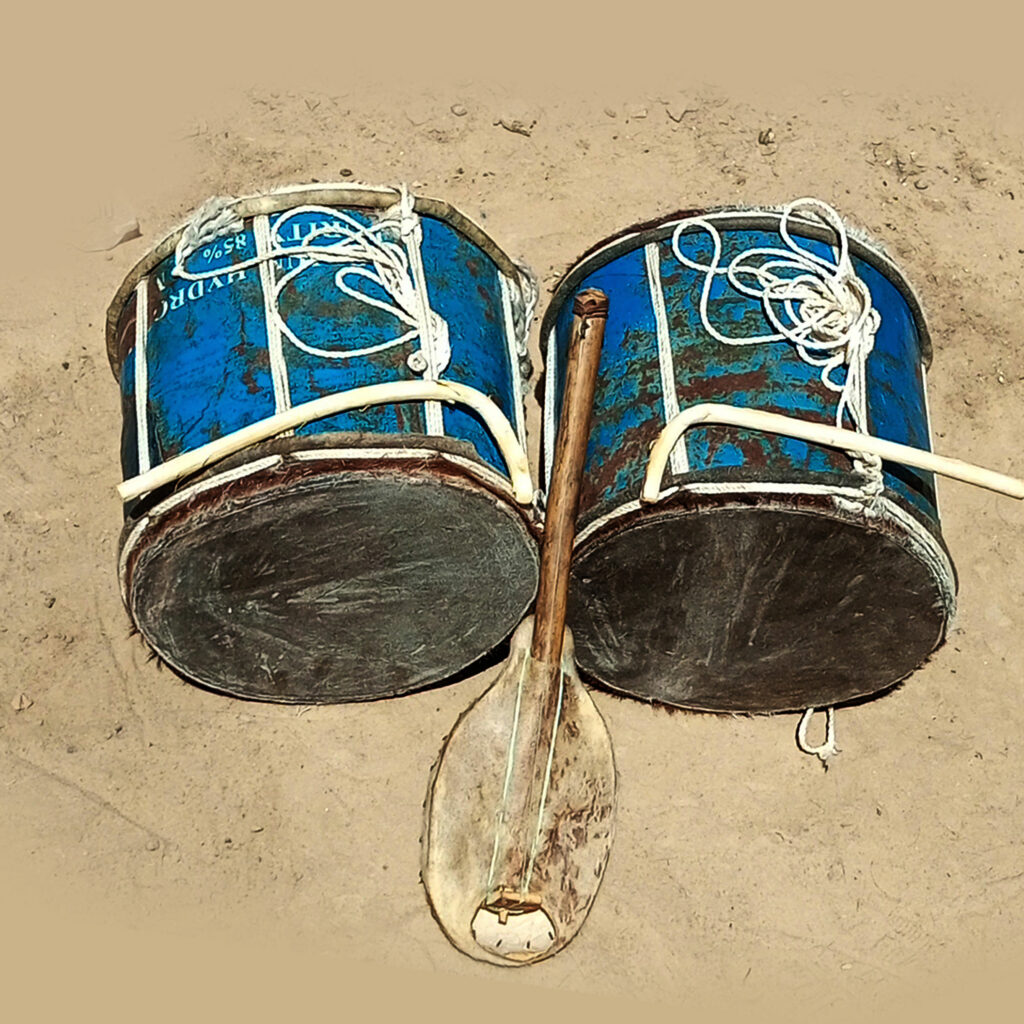A Rhythmic Opening Marked by Cultural Transmission
On Tuesday, October 10, 2024, the Center for the Fabrication and Learning of Traditional Instruments (CFAIT) officially launched its training program with a deeply symbolic opening ceremony. Immediately following the introductory speeches, 17 young participants aged 16 to 19 met their first instructor: Alassane Dicko, a master of the traditional drum, renowned in the Diré region for his ancestral craftsmanship.
This marked the beginning of a remarkable workshop, during which the students would craft—entirely by hand—the center’s very first instrument: the Toubalé, an emblematic drum of the Songhai tradition.

The Story of a Drum That Unites
More than just an instrument, the Toubalé symbolizes unity and collective voice. Historically played during major village gatherings, it provided rhythm for songs, dances, prayer calls, and ceremonies. Its methods of construction were passed down orally from master to apprentice.
Today, very few young people still know how to make it. That’s precisely why this CFAIT initiative is so vital.
From Recycled Metal to Cowhide: The Anatomy of Heritage
Under the expert guidance of Master Dicko, students explored the materials used to craft this traditional drum:
- Two recycled gas canisters serving as the resonating chamber,
- A cowhide soaked for 24 hours,
- Strips of rawhide used for fastening,
- A sharpened blade for the final shave,
- And fire to heat and tune the drum.
While the Toubalé was once carved from solid wood, this modern version creatively repurposes contemporary materials while preserving its original acoustic logic.
A Hands-On Workshop, A Living Pedagogy
For four days (October 10–13), the students were involved in every stage of the process: cutting the hide, drilling, manual assembly, sun-drying, and finally shaving the skin.
“It’s the first time I’ve ever touched an instrument from our culture, let alone built one myself… It feels like uncovering a hidden treasure in my own heritage,” shared Amadou, 17, one of the participants.
After two days of drying, Master Dicko heated the drum over fire—a key step that tightens the skin and sets the tone. The resulting sound was deep, resonant, and rooted in tradition.
The First Vibration, A Shared Emotion
On October 13, the two completed drums rang out for the first time in CFAIT’s courtyard. As their sound echoed, the atmosphere was filled with applause, smiles, and discreet tears, an emotional milestone for students and mentors alike.
“This day will remain etched in our memories. We brought back a sound our grandparents knew, but that we were slowly losing,” said Kadiatou, 18, another student.

A Rooted Knowledge, A Future to Carry Forward
This workshop was more than an exercise in craftsmanship—it was a reconnection to heritage, a lesson through doing, and a powerful reminder of the richness embedded in cultural roots.
And this is only the beginning. Upcoming sessions will focus on the Koullou flute, the Djourkel, the Koubour guitar, the Ndjarka fiddle, and many more instruments from Diré’s living heritage.
Watch the video below
Participants: 17 young trainees
Instructor: Master Alassane Dicko
Dates: October 10–13, 2024
Location: CFAIT, Diré
Instrument Built: 2 Toubalé drums
Main Components: Recycled gas canisters, cowhide, rawhide cords, fire for tuning.

Add a Comment